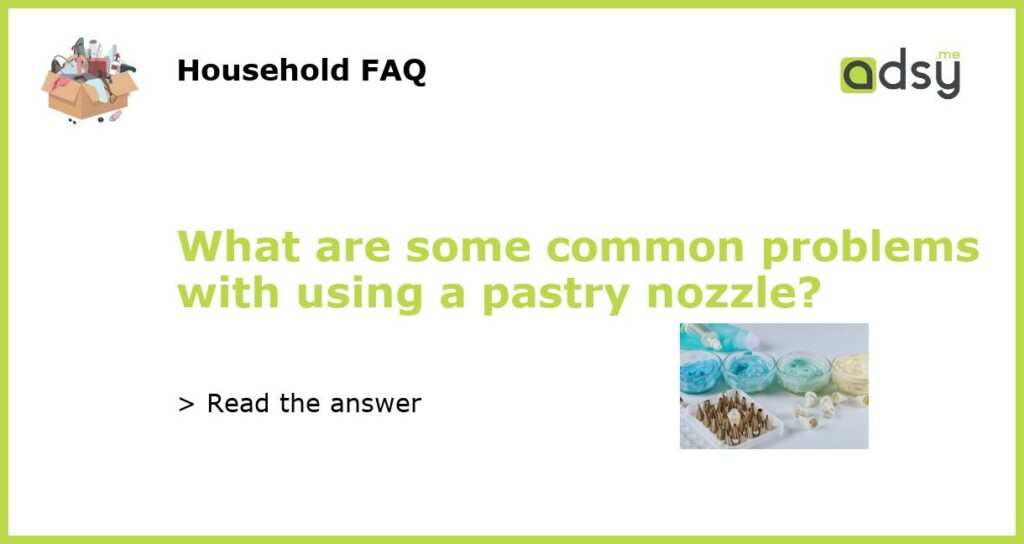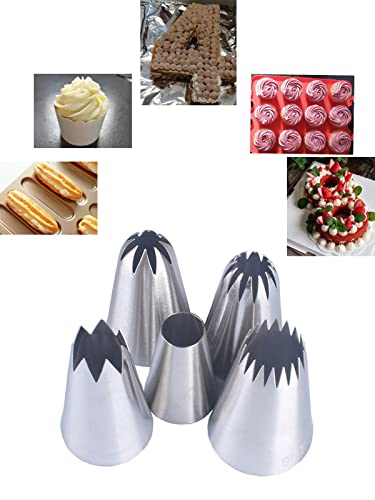Using a pastry nozzle can be a great way to add decorative touches to your baked goods, but it can also come with its fair share of challenges. Here are some common problems that you may encounter when using a pastry nozzle, along with some tips on how to overcome them.
1. Clogging of the nozzle
When working with thicker or chunkier mixtures, such as buttercream or a frosting with nuts or fruit pieces, you may find that your pastry nozzle becomes clogged. This can lead to uneven or blocked flow, resulting in frustrating interruptions during your decorating process.
To prevent clogging, it’s important to ensure that your mixture is the right consistency for the nozzle. If it’s too thick, try adding a small amount of liquid, such as milk or water, to thin it down. Additionally, you can strain your mixture before filling your piping bag to remove any larger particles that could potentially clog the nozzle.
2. Difficulty controlling the flow
Another common problem when using a pastry nozzle is maintaining control over the flow of your mixture. This can result in messy or uneven piping, making it harder to achieve the desired decorative effect.
To improve control, it’s helpful to practice your piping technique before attempting intricate designs. Start by piping simple shapes, such as dots or lines, to get a feel for how the mixture flows through the nozzle. Additionally, you can try adjusting your grip on the piping bag to increase stability and control.
3. Uneven shapes or sizes
Achieving consistent shapes and sizes can be a challenge when working with a pastry nozzle. It’s common to end up with unevenly sized or shaped decorations, which can affect the overall look of your baked goods.
To ensure more uniform shapes and sizes, it’s important to apply consistent pressure on the piping bag while squeezing out your mixture. This can be achieved by controlling the speed and intensity of your hand movement, as well as by maintaining a steady pressure on the bag. Practicing on a flat surface, such as a baking sheet, can also help you achieve more even results.
4. Difficulty changing nozzles
If you’re using different types of nozzles for different decorative effects, you may encounter difficulties when it comes to changing the nozzle. This can be due to the stiffness of the mixture, which can make it hard to remove the nozzle or attach a new one.
To make it easier to change nozzles, you can try warming up the piping bag slightly by running it under warm water or placing it in a bowl of warm water for a few seconds. This will help soften the mixture, making it easier to manipulate. Additionally, you can use a small brush or toothpick to remove any stubborn residue from the nozzle before attaching a new one.
5. Cleaning and maintenance
Proper cleaning and maintenance of your pastry nozzle is essential to ensure its longevity and prevent contamination of your mixtures. However, it can be a tedious and time-consuming task, especially if the nozzle has intricate designs or small openings.
To make cleaning easier, it’s important to clean your nozzle immediately after use, before the mixture has a chance to dry and harden. Use warm soapy water and a small brush, such as a toothbrush, to remove any residue from the nozzle. If necessary, you can soak the nozzle in warm soapy water for a few minutes to help loosen any stubborn particles. Avoid using metal utensils or abrasive cleaners, as these can scratch or damage the surface of the nozzle.
In conclusion, using a pastry nozzle can be a fantastic way to elevate the presentation of your baked goods. However, it’s important to be aware of the common problems and challenges that can arise. By understanding these issues and implementing the suggested tips, you’ll be better equipped to handle them and achieve beautiful and professional-looking results.






